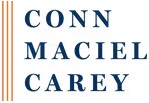The Ohio Bureau of Workers’ Compensation’s Special Investigations Department (SID) marked its 32nd year of fighting fraud and protecting the State Insurance Fund, delivering significant savings for employers and injured workers in fiscal year 2025. Through data-driven investigations and coordinated enforcement, SID secured 56 convictions and saved nearly $92 million for the system. Employer fraud investigations closed 301 cases, identifying $12.8 million in savings, while claimant fraud efforts closed 1,044 cases and identified $66.6 million in savings. In total, dozens of cases were referred for prosecution, resulting in multiple indictments and convictions. BWC officials said the work helps ensure injured workers receive appropriate care while keeping costs down for employers. 12/15/2025




